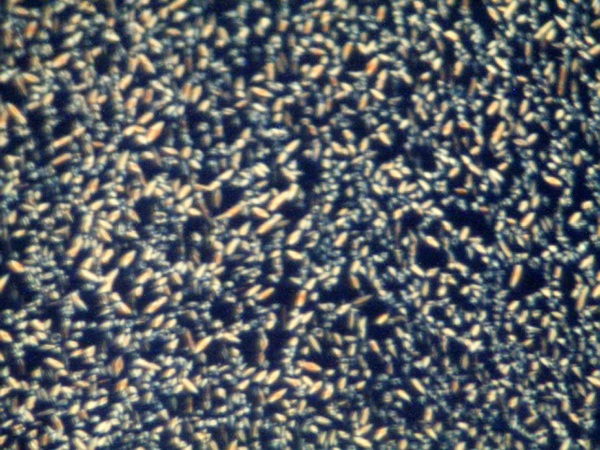EPJ E Highlight – Toward a Fast-Switching Liquid Crystal
- Details
- Published on 09 October 2023

Combining a bulky chain with a stable polymer can enhance liquid crystal performance
From laptop screens to navigation systems, liquid crystals are ubiquitous in modern life. These materials flow like liquids, but their molecules align with one another in a way that resembles the orientational order of a crystal. Electrically switching between different molecular orientations – or phases – in a liquid crystal changes how the material transmits light, hence their use/utility in visual displays.
In a study published in EPJ E, Ashok Kumar, of Jawaharlal Nehru Technological University, Kakinada, India, and his colleagues now report on a new design that adds a bulky chemical side chain to a polymer liquid crystal. The approach combines components that, separately, avoid optical degradation and enhance thermal stability; and could lead to improved switching speeds.
In some liquid crystals, a phase exists where molecules not only align with one another, but assemble into separate layers of self-aligning molecules. The molecules in these layers can together be tilted off-axis, resulting in different sub-phases with exotic electro-optical response. If these molecules are also chiral, the liquid crystal exhibits ferroelectric characteristics, which could switch states much faster than traditional versions. But due to geometry, switching tends to cause these layers to shrink and buckle, degrading the optical properties. To avoid this buckling, researchers incorporate bulky chemical end-chains onto chiral molecular frames.
Kumar and his colleagues added one such chain to a chiral polymer liquid crystal dimer known for its thermal stability. In a series of experiments, the researchers examined the resulting molecules’ behaviour and compared them to other liquid crystals. They concluded that their design resulted in phases with improved thermal stability, large tilt angles, and rapid response to electric fields.
The finding provides a path toward liquid crystals that could be switched at nanosecond speeds. It could help to overcome barriers to widespread use of ferroelectric liquid crystals in technology including flat-screen displays.
Kumar, A.V.N.A., Zoghaib, W.M., Chalapathy, P.V. et al. Collective modes, relaxations, de Vries behavior and field influence in SmA and SmC*deVr phases of chiral liquid crystal dimer C-10Bms with siloxy spacer. Eur. Phys. J. E 46, 89 (2023). https://doi.org/10.1140/epje/s10189-023-00326-2





